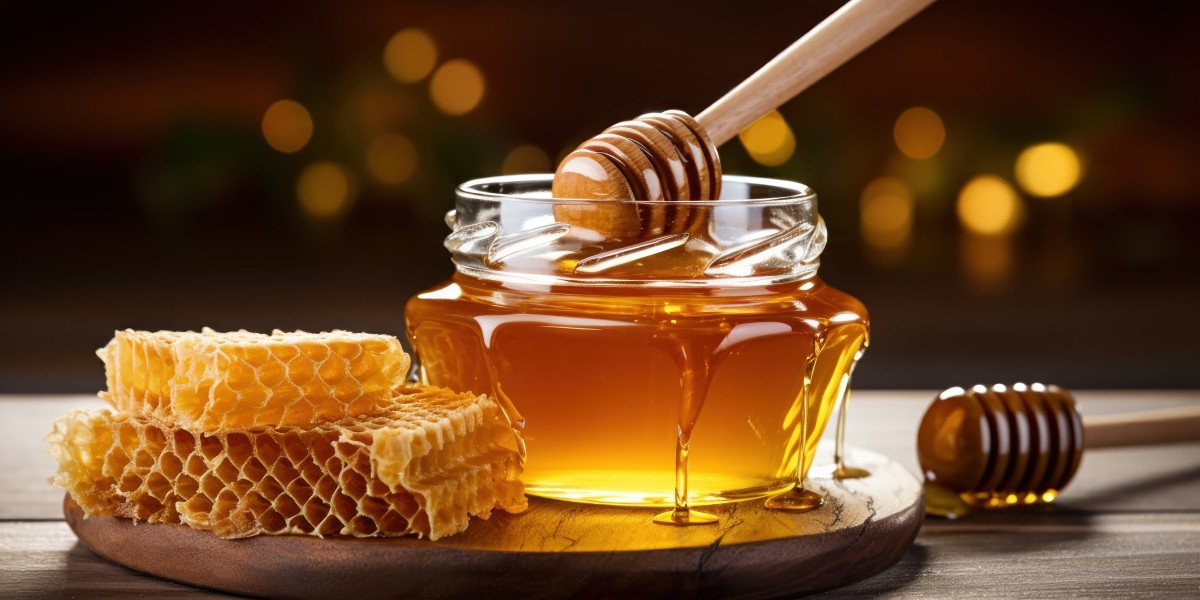Honey has been cherished for centuries, not only for its sweetness but also for its medicinal properties. However, not all honey is created equal. The debate between raw honey and processed honey often leaves consumers wondering which is the better choice. This blog aims to clarify the differences between the two, helping you make an informed decision.
What is Raw Honey?
Raw honey is honey in its most natural form. It is extracted directly from the honeycomb and bottled without undergoing any heating or pasteurization processes. This means raw honey retains all the natural enzymes, antioxidants, and nutrients that bees put into it.
Characteristics of Raw Honey:
Unprocessed and Unpasteurized: Raw honey is not exposed to high temperatures, preserving its natural qualities.
Rich in Nutrients: It contains vitamins, minerals, enzymes, and antioxidants that are beneficial for health.
Varied Texture and Color: The appearance of raw honey can vary depending on the flowers the bees pollinated. It can be cloudy and may contain bits of bee pollen, propolis, and honeycomb.
What is Processed Honey?
Processed honey, also known as commercial honey, undergoes a series of treatments before it reaches the shelves. This includes pasteurization, which involves heating the honey to high temperatures, and ultrafiltration, which removes impurities.
Characteristics of Processed Honey:
Pasteurized: The heating process kills yeast cells, extends shelf life, and prevents crystallization.
Filtered: Ultrafiltration removes impurities and particles, resulting in a clear and smooth appearance.
Uniformity: Processed honey is often blended to achieve a consistent flavor and color.
Comparing the Benefits
Nutritional Value
Raw Honey: Packed with vitamins, minerals, enzymes, and antioxidants. It is known for its antibacterial and anti-inflammatory properties.
Processed Honey: The heating process can destroy many of the beneficial nutrients and enzymes found in raw honey.
Health Benefits
Raw Honey: Supports digestive health, boosts immunity, and can act as a natural cough suppressant. Its antibacterial properties make it useful for wound healing.
Processed Honey: While still a source of natural sugars, the reduction in nutrients means it doesn't offer the same level of health benefits as raw honey.
Flavor and Texture
Raw Honey: Offers a complex, rich flavor profile that can vary widely depending on the source of the nectar. Its texture can range from smooth to granulated.
Processed Honey: Typically has a uniform, mild flavor. The texture is usually smooth and consistent due to filtration.
Exploring the Environmental Impact
The choice between raw and processed honey also has environmental implications. Supporting raw honey often means supporting local beekeepers who practice sustainable beekeeping methods. These practices are crucial for maintaining healthy bee populations and ensuring the pollination of various crops. On the other hand, large-scale honey processing can sometimes involve practices that are not as environmentally friendly, such as extensive transportation and the use of chemicals.
Culinary Uses
Both raw and processed honey have their place in the kitchen.
Raw Honey: Due to its robust flavor, raw honey is perfect for drizzling over yogurt, adding to smoothies, or enjoying with a slice of warm toast. Its texture also makes it ideal for recipes that benefit from a bit of texture, such as granola or certain baked goods.
Processed Honey: With its uniform texture and milder taste, processed honey is often preferred for baking and cooking where the consistency of the final product is key. It dissolves easily in liquids, making it a good choice for sweetening tea or sauces.
How to Store Honey
Proper storage is essential to maintain the quality of both raw and processed honey.
Raw Honey: Store it in a cool, dark place in a tightly sealed container. Raw honey can crystallize over time, which is a natural process and does not indicate spoilage. If crystallization occurs, gently warm the jar in a bowl of warm water to return it to its liquid state.
Processed Honey: Store in a similar manner as raw honey. The pasteurization process helps prevent crystallization, but if it does occur, the same gentle warming method can be used.
Common Myths About Honey
There are several misconceptions about honey that can influence consumer choices:
Myth: All honey is created equal.
Fact: The processing and source of honey significantly affect its nutritional content and health benefits.
Myth: Crystallized honey has gone bad.
Fact: Crystallization is a natural process and does not indicate spoilage. Honey can be easily returned to a liquid state with gentle warming.
Myth: Dark honey is of lower quality.
Fact: The color of honey depends on the nectar source and does not reflect its quality. In fact, darker honey often contains more antioxidants.
Conclusion
Both raw and processed honey have their unique qualities. Raw honey, with its natural enzymes, antioxidants, and nutrients, offers more health benefits and a varied flavor profile. On the other hand, processed honey provides a consistent taste and appearance, with a longer shelf life. Understanding these differences can help you choose the best honey for your needs, whether for culinary use or as a natural remedy.
By appreciating the distinctions between raw and processed honey, you can make more informed choices that benefit your health, taste preferences, and even the environment.







